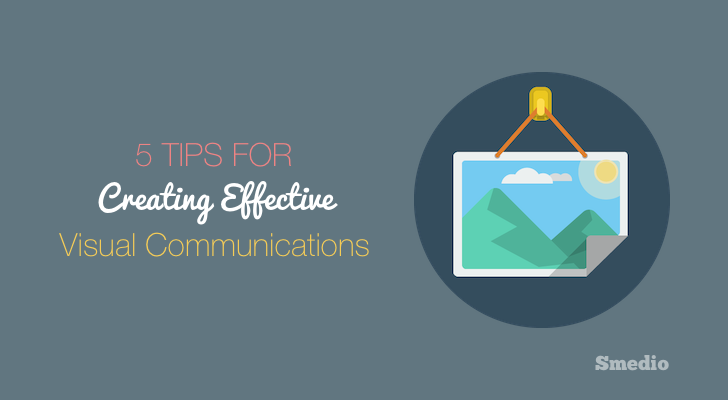Why are visual communications important? At one time or another, a parent or colleague probably told you, “It’s not what you say, it’s how you say it.” This maxim holds true to a great extent in visual communication. No matter how important the message, if it is conveyed poorly, people won’t read it, remember it or react to it. Here are five critically important design elements to keep in mind when working on your visual communication:
1. Color
Selecting a visually appealing color palette not only makes a message more readable, it can reinforce or even provoke the emotional response you are trying to achieve. There are many online tools available to guide color selection; here is a list of 28 tools to help in creating a color scheme.
Every visual communication specialist should be familiar with the psychology of color. While the connection between color and emotional response varies from person to person, there are at least a few colors we can be reasonably sure fit certain types of messages:
- Blue conveys strength and trust — one reason why it is so often used in corporate logos.
- Red conveys excitement, action and passion. Red is useful for messages encouraging a direct and immediate response — but too much of it could scare people away.
- Green is in some ways the opposite of red, suggesting tranquility, health and an environmentally friendly attitude. It’s a good color choice when you want people to slow down and absorb a soothing message.
- Orange is a happy, friendly color — which may explain why it is so widely used (some would say overused) in company website color palettes. Nevertheless, it is a strong, attention-getting color that certainly has a place in a broad range of visual communications.
Color selection is an interesting topic and one that brands should carefully consider. Here is a deeper look into the psychology of color in marketing and branding.
2. Typography
When typography is pleasing to the eye, people are attracted to the message and want to read it. It serves as roofing to the message. Often, the secret to good typography is simplicity. When typographical elements become too fancy, they become confusing. A few important rules:
- Keep font selections to a minimum, and make sure they are easy to read.
- Make font size adequate for the medium used and the audience. For instance, fonts should be extremely large for digital signage in a convention center or stadium but smaller for interactive displays.
- Use subtitles and bullet points to enable easy scanning and reinforce key ideas.
- Avoid overly wide or narrow line widths — they make reading and scanning difficult.
- Have strong contrast between text and background.
- Avoid all-caps and italics for big portions of text — it’s also hard to read.
3. Imagery
The number one no-no for imagery is the overuse of stock images. Today’s communication consumers are exceedingly sophisticated, thanks to the pervasiveness of smartphones and Web browsing. Most people recognize stock photos when they see them and conclude the organization using them likes to take shortcuts and isn’t very credible. These are definitely not the attitudes you’re looking for, no matter what the message is.
In contrast, customized imagery conveys credibility, but the imagery must be relevant to the message and ideally reinforce a key idea in the message. A frequently overlooked way to increase an image’s impact is to add a caption. Image captions are more likely to be read than body text — for many people, it’s hard not to read a caption. For instance, instead of showing a photo of your widget, add a caption to the photo such as, “Our widgets come with a lifetime guarantee.” By doing so, you’ll increase your message’s impact tenfold.
4. Movement
Just because visual communication often can move, doesn’t mean it should move. For example, the popular website rotating “slider” header images are actually a poor communication practice, because readers are often too impatient to read them (for starters).
Movement usually works best when it is inserted strategically. If there are lots of things moving at once, it’s an overload for the viewer and becomes a distraction. Subtle, spaced out movements work best. Once attention is drawn, viewers are likely to take a look at the fixed marketing, branding or promotional message that is the primary function of the sign.
5. Content
How you compose your visual message’s text often makes or breaks the effectiveness of even the most visually impressive communication like a Criminal Lawyer Brampton. For instance, if the text is riddled with grammatical errors, all credibility will be lost. Other crucial content best practices to keep in mind:
- Speak from the reader’s point of view — what’s in it for them? Avoid talking about your organization … nobody cares.
- Keep sentence structure simple.
- Use a conversational tone unless you have a good reason for being formal.
- Don’t be overly subtle. People are bombarded by messages 24/7. Be direct, and don’t be afraid to repeat it.
[et_social_share]








